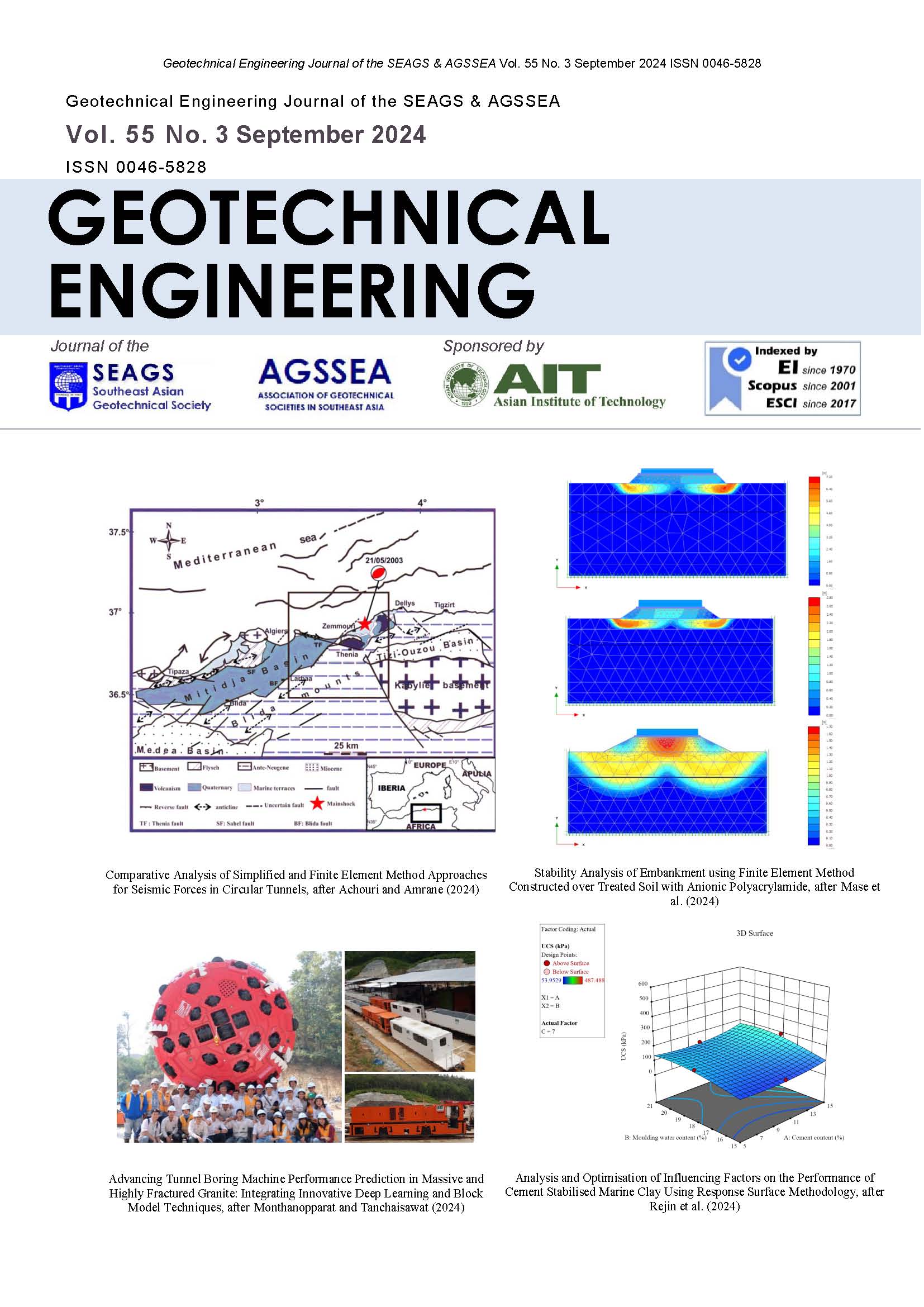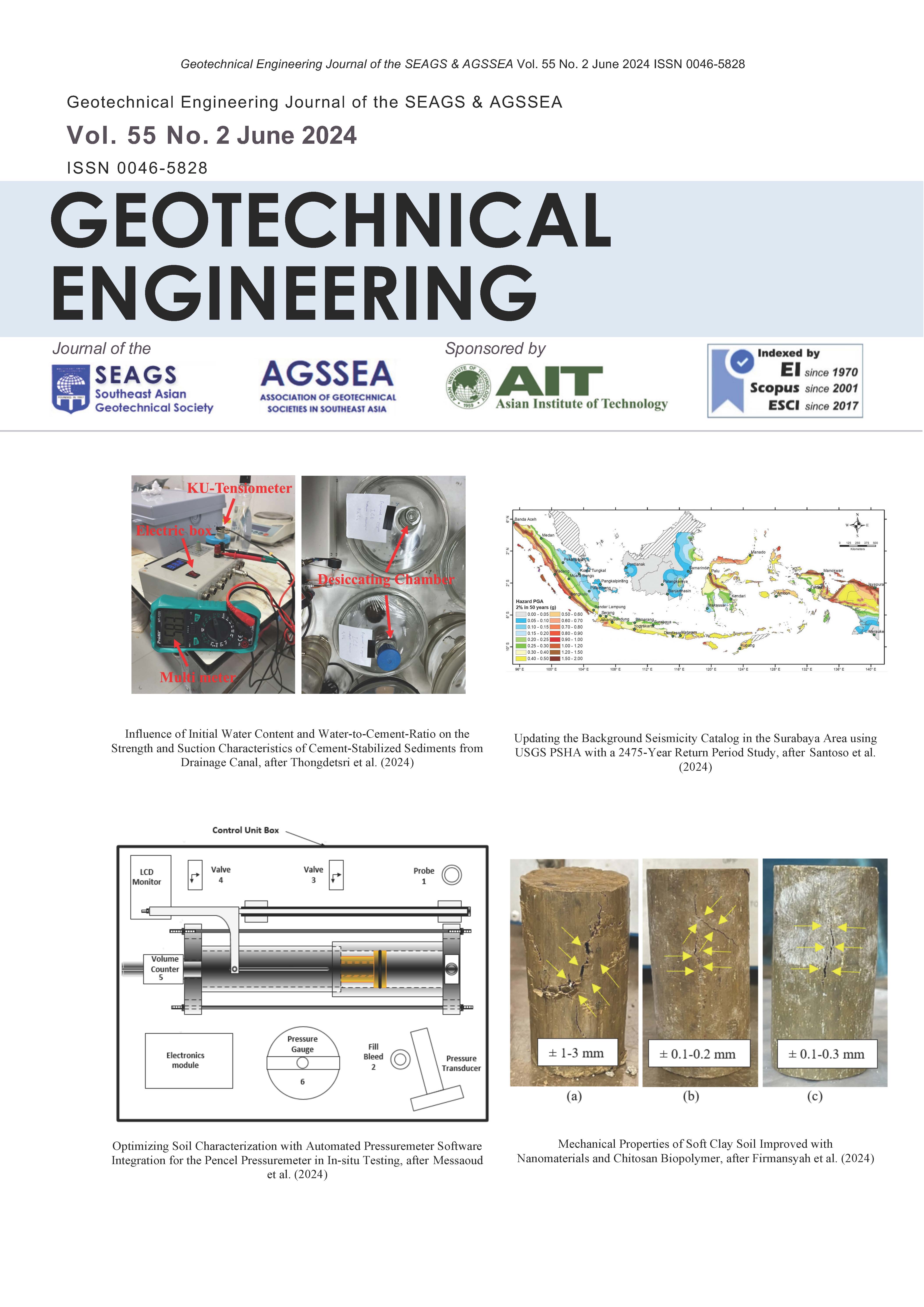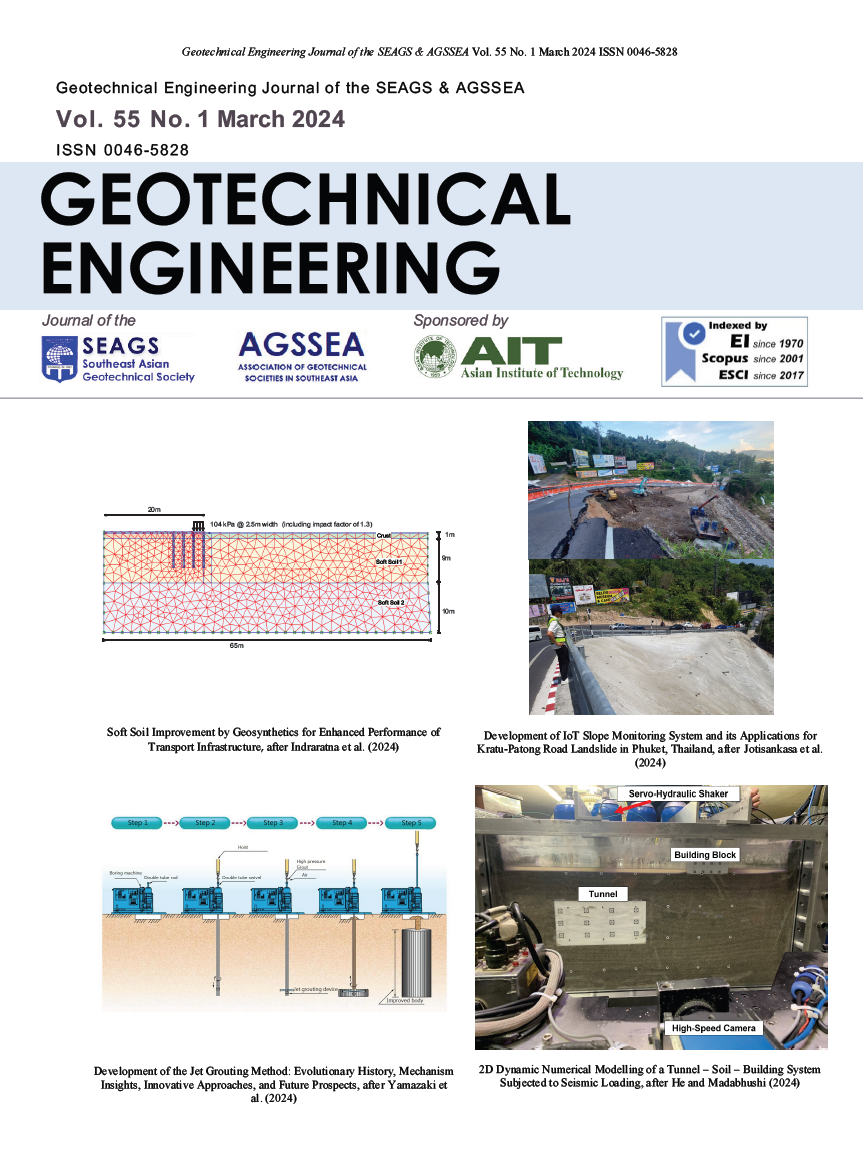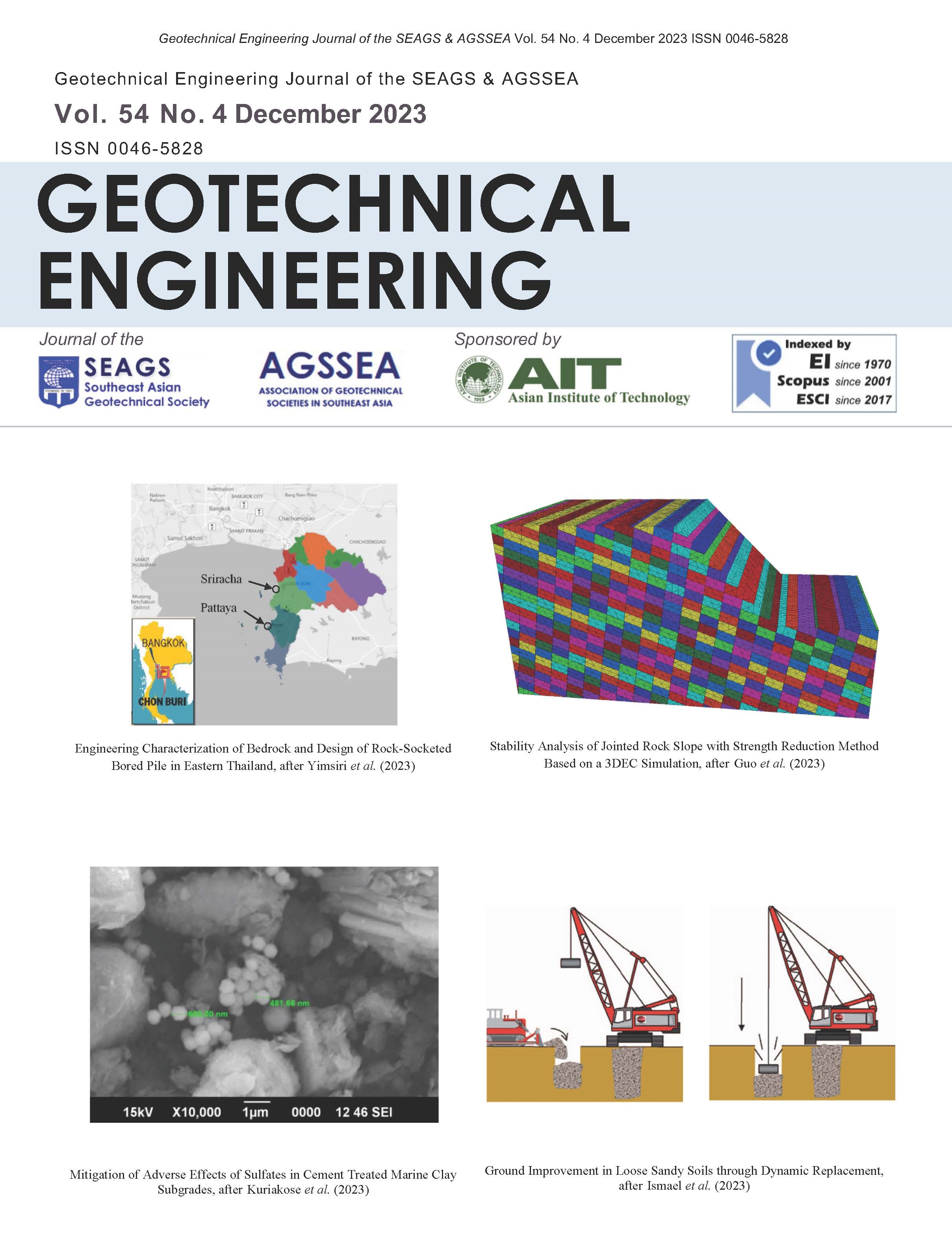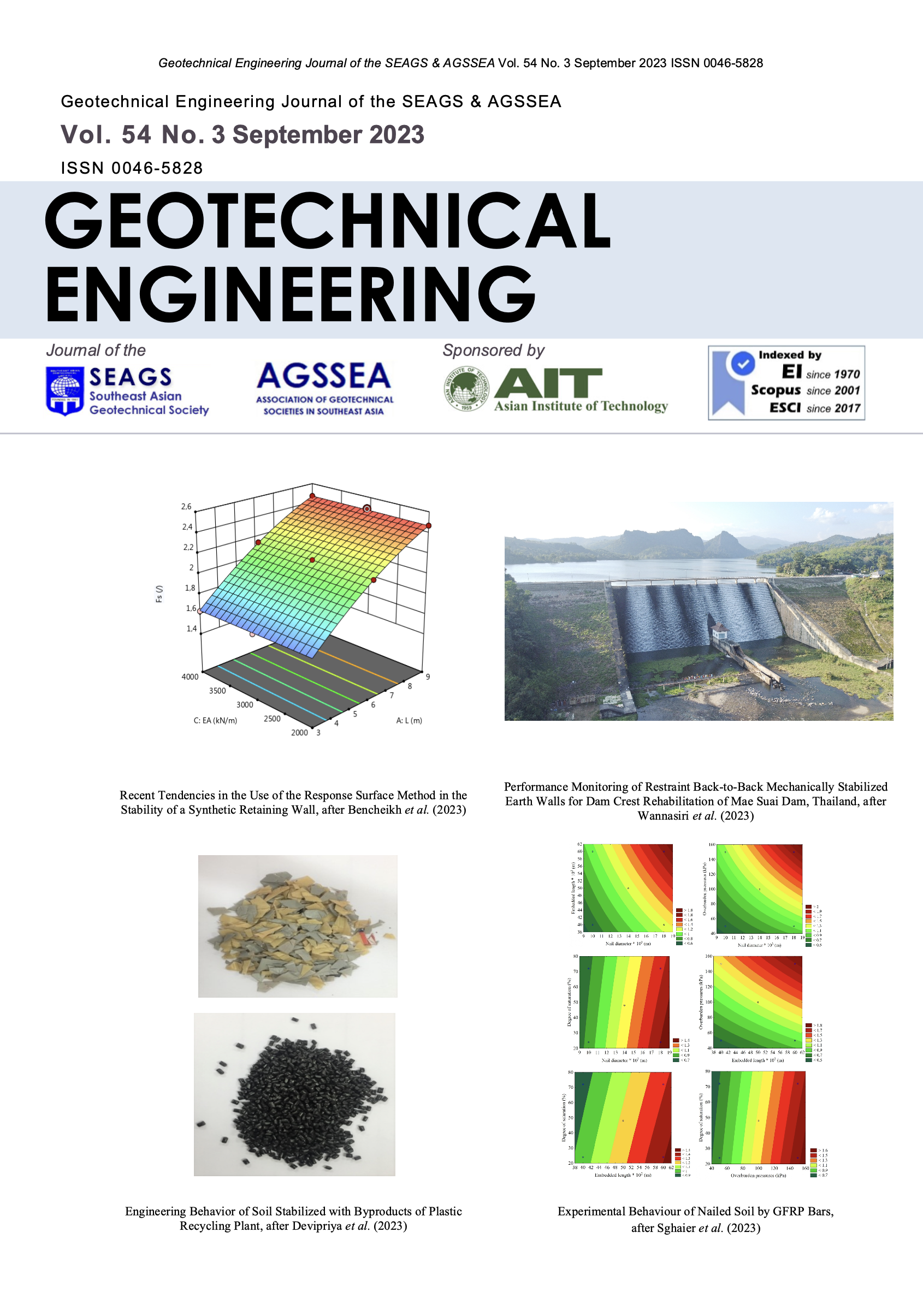Geotechnical Engineering Journal of the SEAGS & AGSSEA ISSN 0046-5828
Vol. 50 No. 3 September 2019
Load-movement Response by t-z and q-z Functions
Bengt H. Fellenius and Mohammad Manzur Rahman
ABSTRACT: A static loading test provides more than a single-point value, “capacity”. The primary use of a loading test is to show the load-movement response of the pile-and-soil system in order to assist in analysis of the transfer of a supported load to the soil. A pile is composed of a series of short lengths (elements) that are affected by shaft shear or toe stress, expressed as a relation of stress (load) versus movement for the element. The response of the soil around a pile element is expressed in load-transfer functions. The response of a pile head, that is, the actual pile load-movement curve, is the sum of the response of a series of individual pile elements. Fitting the theoretical load-movement response to actual test results by trial-and-error applying a series of shaft (t-z) functions and a toe (q-z) function, enables a calibration of a pile and site that serves to establish the load-transfer conditions of a piled foundation needed for determining what short and long-term settlement the foundation will experience. Thus, a crude “capacity” assessment will not do. Eight functions for modeling strain-hardening and strain-softening response are presented in the paper and their use in fitting theoretical to actual results is illustrated.
KEYWORDS: Load-movement response, t-z and q-z function, Test simulation









